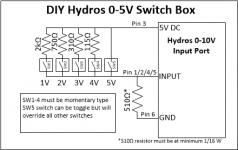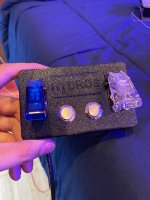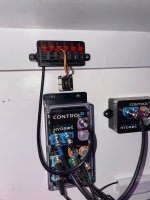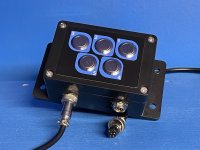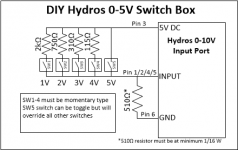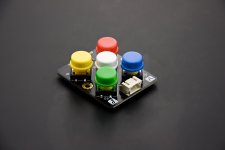JeffB418
HYDROS Expert
Here is a simple way to use one of your 0-10V inputs and have 5 discrete switch inputs for 1V/2V/3V/4V/5V levels. This leverages the onboard 5V DC pin and uses a resistor ladder to create multiple voltages. Note that only 1 switch can be active at a time so momentary switches are recommended. Also the 5V switch will act as an override to all other switches. Using standard radial resistors make easy work of this circuit. If you want less switches, just leave out the associated resistor and switch from the diagram. Amazon has many industrial switch boxes with up to 4 switches as well, here is one Example.
